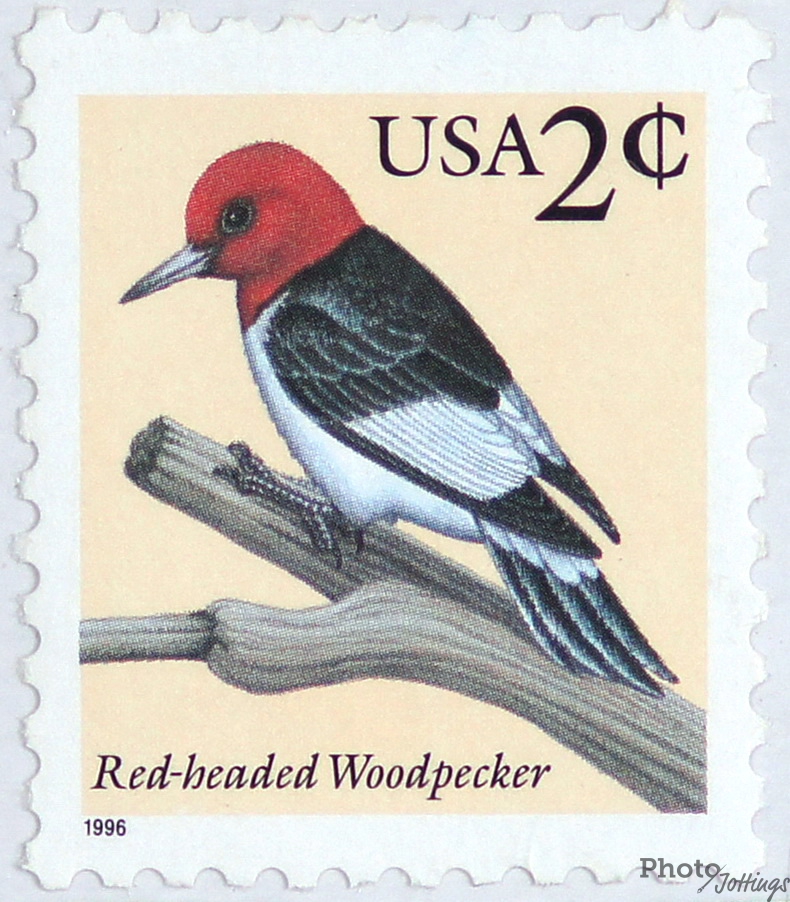Here’s a brief look at the Minolta AF 135mm F/2.8 lens. Scroll down for the main review.
|
Lens
|
2556-600 Minolta AF 135mm F/2.8
|
|
Box contents
|
Front and rear caps, and user’s manual.
|
|
Cost
|
No longer manufactured, and no replacement from Sony as of 2011. Original cost roughly $119-$309 depending on purchase year and store, but now available on eBay for about the same price.
|
|
Build quality
|
Good
|
|
Additional information
|
If you can’t find a good copy of the Minolta AF 135/2.8, consider the Sony 85mm F/2.8 SAM, which is similar to this lens, although shorter in focal length, and is available brand new.
|
| Specifications below |
|
|
Optical configuration
|
7 elements in 5 groups
|
|
Angle of view
|
18° full frame, 12° APS-C
|
|
Aperture
|
7 blades, straight
|
|
Full frame and APS-C
|
Yes, and APS-C equivalent to 202.5mm.
|
|
Depth of field and focus scales?
|
Yes.
|
|
Minimum focus, image plane to subject
|
38.25″ (972mm)
|
|
Minimum focus, end of lens barrel to subject
|
33.25″ (845mm) with hood in stored position
|
|
Hard stop at infinity focus?
|
Yes, and shows perfect focus at infinity.
|
|
Length changes when focusing?
|
No
|
|
Focus ring turns in AF?
|
Yes |
|
Filter size
|
55mm
|
|
Filter ring rotates?
|
No
|
|
Distance encoder?
|
No
|
|
Max magnification
|
0.16x, or 1:6.25
|
|
Min. F/stop
|
F/32
|
|
Sony teleconverter compatible?
|
No
|
|
Length changes when zooming?
|
N/A
|
|
Dimensions WxL (my measurements)
|
2.5″ x 3.26″ 65mm x 83mm.
|
|
Maximum extended length (my measurements)
|
4.05″ (103mm) hood extended only, lens does not extend.
|
|
Weight bare (my scale)
|
12.9oz (366g)
|
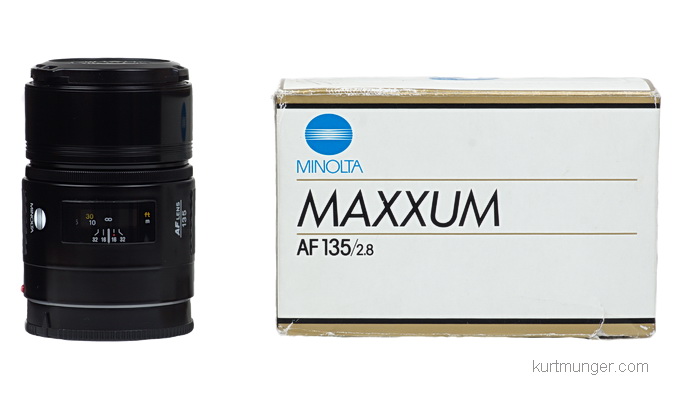 |
| Box and lens |
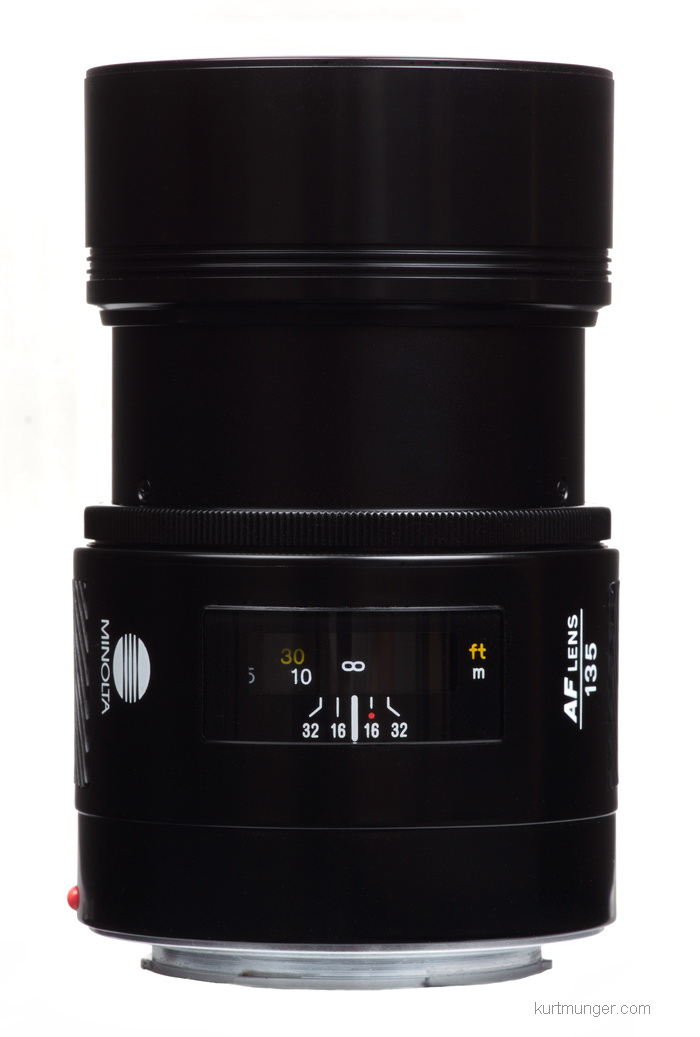 |
| Side shot with hood in up position |
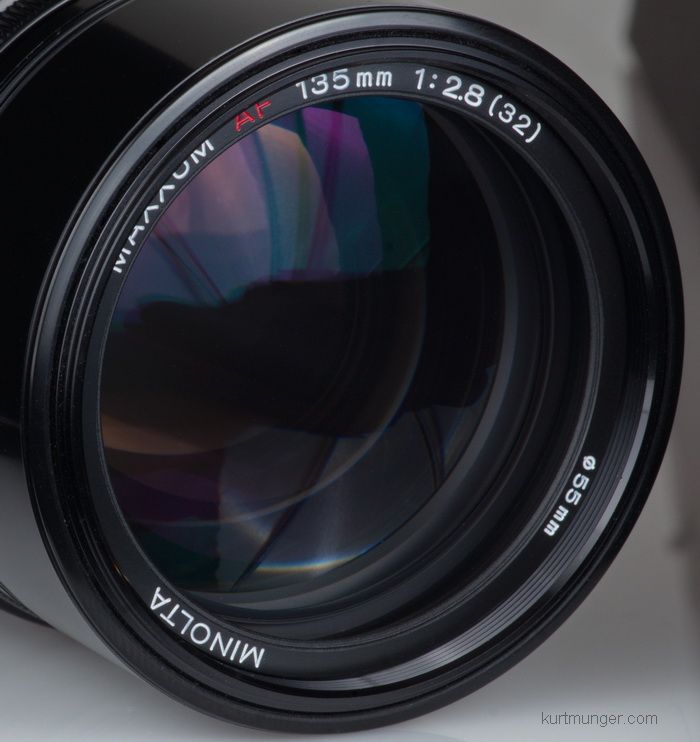 |
| Front element |
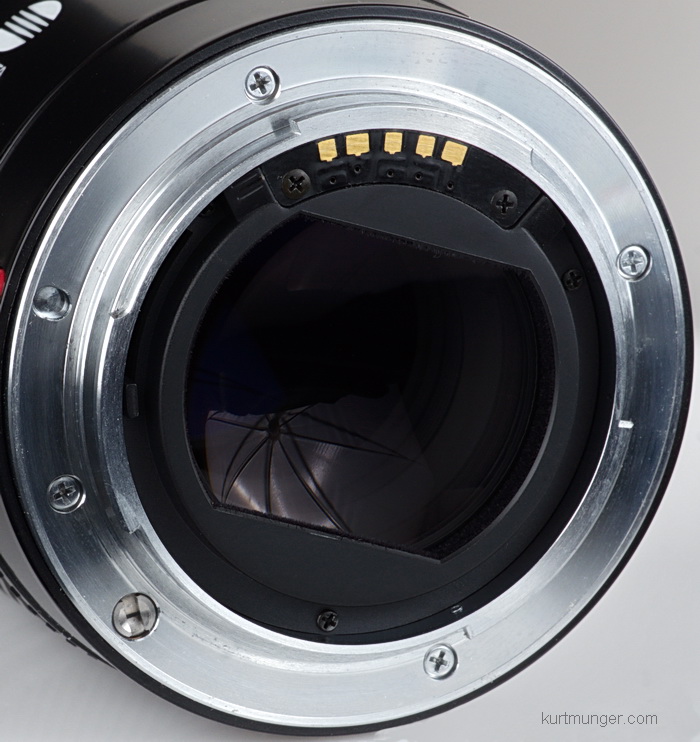 |
| Backside mount. |
The aperture shape is a nice heptagon from F/2.8-8, and flattens on one side noticeably as you stop down to F/32.
This lens has the typical multi-coatings from the 1980s, which is a somewhat green/bluish/purple cast, and as a result, you’ll see a lot of colored blobs and/or arcs depending on angle and aperture. The sun doesn’t have to be in the image to make a mess of things, so be sure and block any intense light sources which can wreak havoc with your pictures. The small, built-in hood doesn’t do much good, use your hand for keeping the sun out of the shot if possible.
 |
| No distortion. |
|
F/2.8
|
F/4
|
 |
 |
|
F/5.6
|
F/8
|
 |
 |
Bokeh, or background highlight blur is generally good, although I see a slight ring around the highlights at all apertures. I see some spherochromatism, meaning green tinged out of focus highlights in the background, and magenta tinged in the foreground. This isn’t something to worry about. Crops above were taken from the center of the image, focused about 25′ (7.6m), with the background about 45′ (13.7m) away.
|
F/2.8
|
F/4
|
 |
 |
When using an APS-C camera, there is no real light fall-off to worry about. At close focus, the light fall-off is slightly stronger.
Focusing accuracy is crucial at F/2.8!
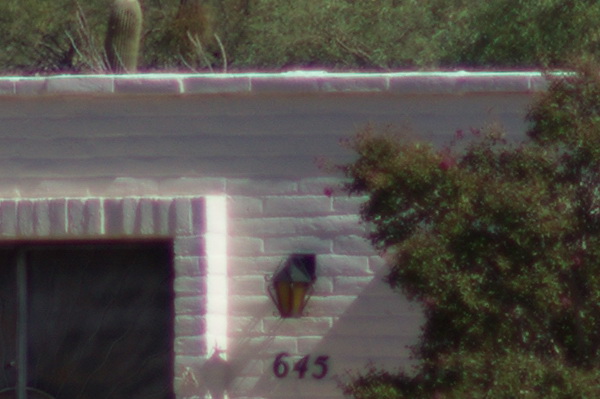 |
| Focused slightly behind the subject |
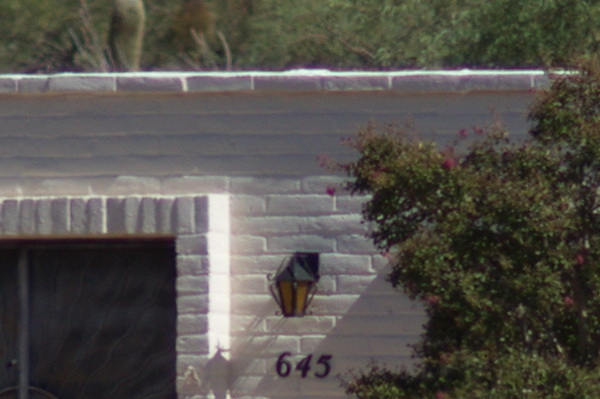 |
| Focused slightly in front of the subject |
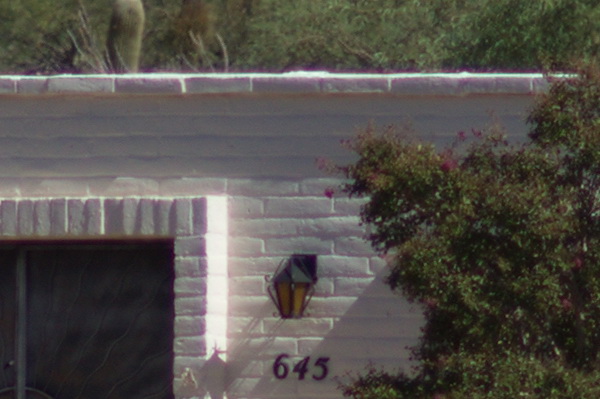 |
| Focused correctly |
Accurate focusing is crucial for telephoto lenses at wide apertures, such as the 135mm F/2.8 here. In the top crop, the camera focused slightly behind the house, you can see this by looking at the background foliage above the house, it’s sharper than the other two crops.
The middle crop was focused slightly in front of the subject, although this shots appears better because of the lack of magenta color fringing, it’s really not quite as sharp as it could be.
The bottom crop is focused correctly on the house, you can see the foliage out front and the metal window guard on the left is sharper here.
The range of perfect focus is super slim, and the differences in focusing accuracy in these crops highlights the limits of the camera’s AF system. I used the Sony A580 for this test, but even using the A900 with micro adjustments enabled still isn’t perfect all the time. The camera’s AF system chose the focus for the above crops, each time slightly different. The best way to see if you have your subject in perfect focus is to use live view, focus check and magnified to the max. At smaller apertures, focusing isn’t so critical, that’s why cheap cameras come bundled (kit) with slow lenses, it’s not just the lower cost, it’s because the AF system doesn’t have to be very good to produce sharp shots.
This lens focused correctly when set to the infinity hard-stop, but if you’re at shorter distances, you’ll want to do a focus check to be sure of getting the sharpest shots. The above 100% crops were taken almost 200 yards (200m) away from the camera, so infinity for this lens at F/2.8 is somewhere beyond that distance.
|
Minolta AF 135mm, @ F/5.6
Center
|
Sony 70-400mm @ 400mm, F/5.6
Center
|
 |
 |
|
Mid-section
|
Mid-section
|
 |
 |
|
Corner
|
Corner
|
 |
 |
Full frame results using the Sony A900 below.
Check out the differences when using a film or full frame camera below. I’m only pointing out the noticeable issues as compared to the APS-C bodies, so if I don’t show it here, the results are not significantly different enough to warrant posting an additional set of images in this section.
Light fall-off
|
F/2.8
|
F/4
|
 |
 |
Light fall-off is definitely stronger with full frame coverage. I see moderate levels at F/2.8, however, by closing the aperture one stop, the dark corners begin to clear up nicely.
Full image below illustrating light fall-off from A900.

This full scene shows actual-use light fall-off. It’s really not noticeable in my opinion. This bright daylight landscape scene would normally be shot around F/5.6, and light fall-off would begone. Data for the image is; F/2.8, 1250sec, +0.30eV, ISO 200.
Ghosting.
|
F/5.6, sun out of shot
|
F/5.6, sun out of shot
|
 |
 |
Ghosting control is awful when the sun is near, or inside the image. Contrast has been wiped out. Word to the wise; don’t wave this lens around near the sun or any other bright light. The hood does no good in sunlight.
Color fringing.
|
F/2.8
|
F/4
|
 |
 |
Center sharpness.
Below are crops from the image centers.
|
F/2.8
|
F/4
|
 |
 |
|
F/5.6
|
F/8
|
 |
 |
|
F/2.8
|
F/4
|
 |
 |
|
F/5.6
|
F/8
|
 |
 |
There is some softness in the mid-sections at F/2.8-5.6, with a noticeable improvement at F/8, at which point the mid-sections are almost as sharp as the centers.
Corners.
|
F/2.8
|
F/4
|
 |
 |
|
F/5.6
|
F/8
|
 |
 |
|
F/5.6 from mid section
|
F/5.6 from center
|
 |
 |
The full frame corners are a little soft and dark at F/2.8, but sharpen up nicely at F/8. I see the corners look almost sharper than the mid-sections, that’s a little unusual, and makes the lens better suited for a full frame camera as there is no penalty for using the lens’ full image circle.
Distortion next
 |
| Flat on A900 |
I see almost no distortion with full frame coverage, again, this is a bit unusual, as there is no distortion using an APS-C camera. No penalty for full frame here either!
Here are the full size versions from the Sony A580 APS-C camera. Disregard the bottom foreground clutter, it is not within the depth of field. I see a sharp image from one side to the other at F/2.8, but it’s super sharp at F/4, and that’s where it maxes out in resolution through most of the field. These are handheld shots, so they are not lined up perfectly. Manual focusing was used.
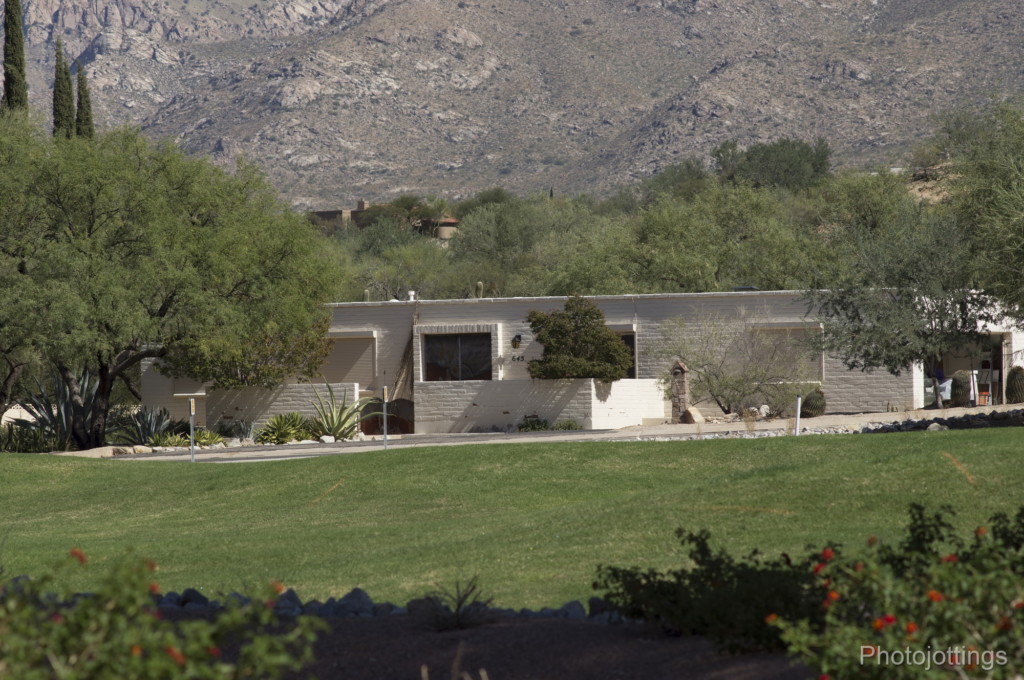
Click yellow buttons below for full size versions.
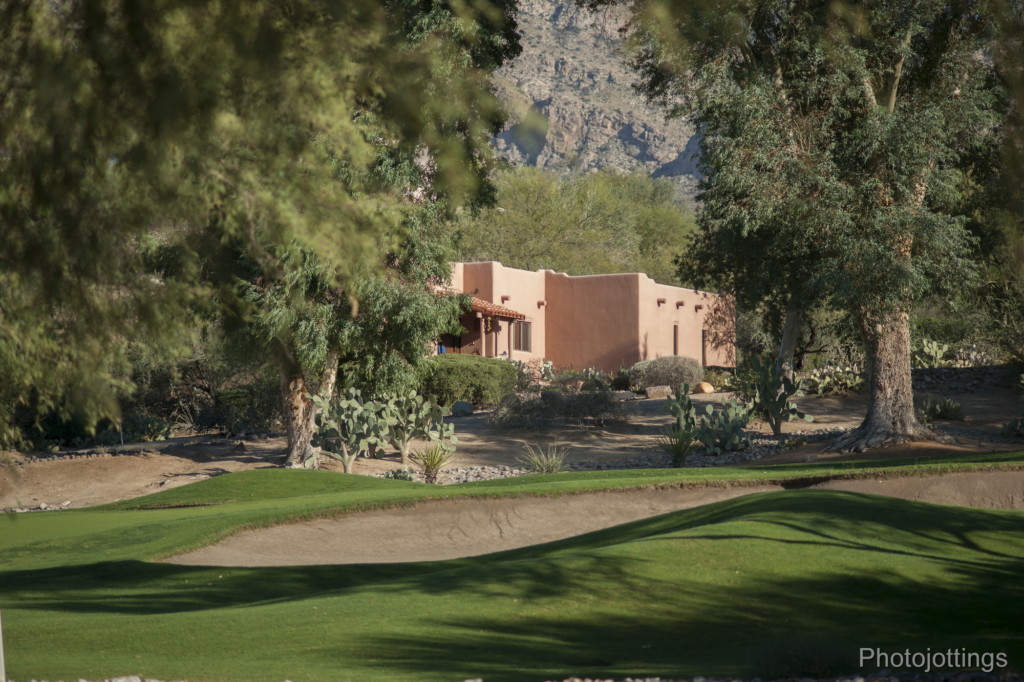
Earning high marks are: distortion control; it’s flat on full frame and APS-C; center sharpness, where F/2.8 shows a surprising amount of detail, (although there is some veiling haze and color fringing), and light fall-off: very little on full frame at F/2.8. The color fringing can be corrected in-camera on modern Sony cameras.
The Minolta AF 135/2.8 is a small lens that can be stored in your coat pocket if you like hand-held low light shooting but aren’t sure you need that much focal length. If you want something even smaller, check out theSony 85mm F/2.8 SAM, obviously it doesn’t have quite the reach of 135mm, but you can get them new, and it performs a little better all the way around.
Bottom line; a great lens for the price, capable of handling today’s high megapixel sensors. Get a Sony adapter for your mirroless cameras here so you can use auto focus.
